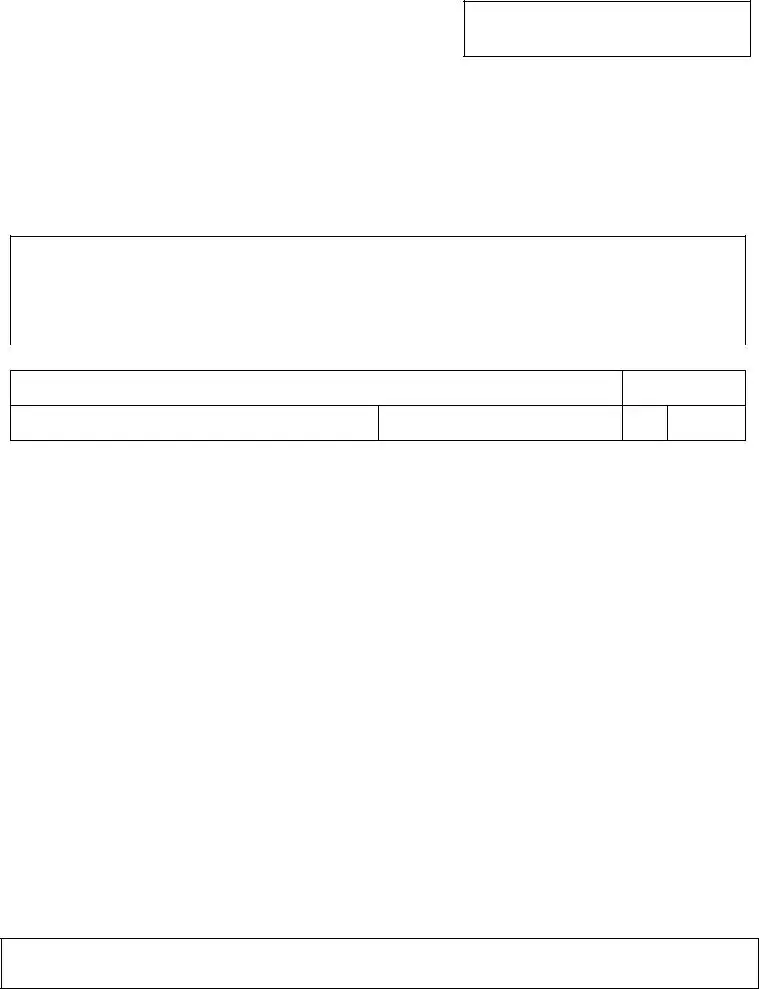Minnesota Department of Human Services
Office of Inspector General
LICENSING DIVISION
License Holder Notarized Signature
Placeholder for barcode/unique identifier. If the license holder tax ID info matches this could auto-populate; or the form will be a fillable form they complete and print.
Minnesota Statutes 2012, section 245A.04, subdivision 1, requires a notarized signature of the applicant.
For an individual license holder this means the individual person or sole proprietor that operates the license.
For a nonindividual license holder this means the agent who is responsible for dealing with the commissioner of human services on all matters provided for in Minnesota Statutes, chapter 245A and on whom service of all notices and orders must be made on behalf of all controlling individuals of a voluntary association, organization, public body, governmental agency, or business entity that is the license holder.
License holder information
Full legal name as it appears on your tax forms
Click here to enter text.
Address |
City |
State |
Zip |
Click here to enter text. |
Click here to enter text. |
|
|
|
|
|
|
SSN for Individual / MN Tax ID for Nonindividual |
Federal Employer ID (FEIN) |
|
|
Click here to enter text. |
Click here to enter text. |
|
|
|
|
|
|
Program information (attach additional pages as needed)
Program name
Instruction
1.Print your full legal name in the space provided.
2.DO NOT date and sign the License Holder Notarized Signature form until you are in the presence of a notary public. A notary public can usually be found at a bank or courthouse.
3.The notary will affix his/her stamp or seal to this form and sign it and date it after s/he has witnessed you sign the form and verified that you have provided a valid I.D. that confirms your identity and signature.
4.Make sure to bring identification to show to the notary public.
5.Make a copy of the completed notarized form for your records. Mail the original notarized form by Sept. 30, 2012, to: DHS
Licensing, ATTN: Notarized Form, PO Box 64242, St. Paul, MN 55164-0242.
Verification
In accordance with Minnesota Statutes 2012, section 245A.04, subdivision 1, by signing your name you are affirming that you are the
DHS license applicant or license holder, or the authorized agent responsible for dealing with the commissioner of human services on
all matters provided for in Minnesota Statutes, chapter 245A and on whom service of all notices and orders must be made.
I, ________________________________________________________ (print full legal name), swear that I am the individual license
holder or the authorized agent for the nonindividual license holder. |
|
|
_________________________________________________ |
STATE OF __________________________________ |
Signature |
COUNTY OF __________________________________ |
|
|
Subscribed and sworn to before me on |
|
this ____ day of __________________ , 20____ , |
|
_________________________________________________ |
|
Notary Public |
For DHS Licensing Division Use Only – DO NOT WRITE IN THIS BOX.
Verified original form on ______________ (MM/DD/YYYY) by ______________________________________ (Print name and initial)
